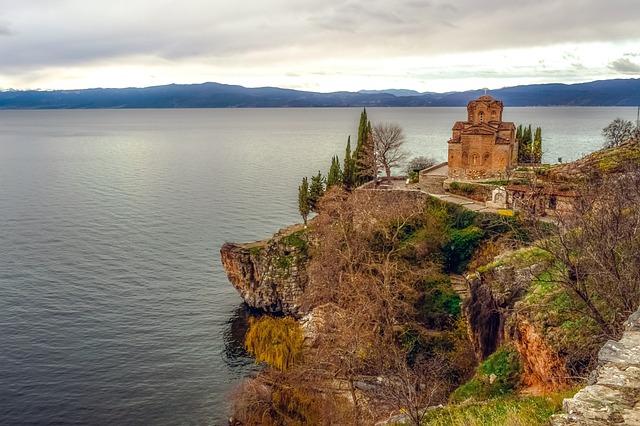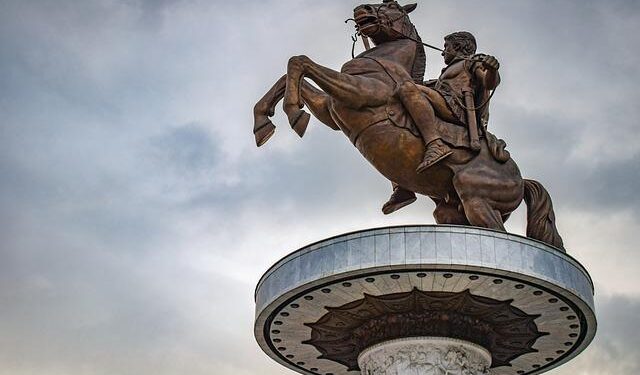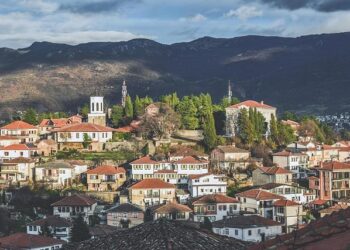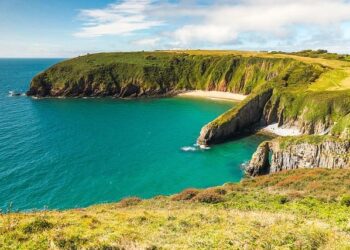Lake Ohrid, a stunning natural wonder straddling the border between north Macedonia and Albania, is not only cherished for its breathtaking scenery but is also recognized as a UNESCO World heritage site for its unparalleled biodiversity and cultural significance. Though, this pristine ecosystem is facing an alarming threat: pollution. As industrial progress and urban expansion escalate in the surrounding regions, the delicate balance of Lake Ohrid’s ecosystem is at risk, prompting urgent concerns from environmentalists, local communities, and international observers alike. This article delves into the challenges facing this iconic locale, exploring the implications of pollution on its unique flora and fauna, and the steps being takenŌĆöor neglectedŌĆöto safeguard one of Europe’s most precious aquatic treasures.
Lake Ohrids unique Biodiversity Under threat from Pollution
Lake Ohrid, one of the oldest and deepest lakes in Europe, boasts a remarkable array of flora and fauna, many of which are endemic and contribute to its designation as a UNESCO World Heritage site. Though,the precious biodiversity of this ecological treasure is increasingly threatened by pollution,both from urban waste and agricultural runoff. The influx of contaminants has led to alarming changes in water quality, considerably impacting the delicate balance of its unique ecosystems.Key species such as the Ohrid trout and various endemic mollusks are facing unprecedented threats as their natural habitats deteriorate.
Despite efforts to monitor and mitigate pollution levels,the situation remains precarious due to factors including industrial waste discharge and unregulated tourism.A recent report highlighted several critical indicators of environmental distress in lake Ohrid, including:
- Increased nutrient loading: Resulting in algal blooms that endanger aquatic life.
- Declining fish populations: Compromised by habitat loss and declining water quality.
- Contamination levels: Breaching safety standards for both local wildlife and human activity.
Considering these challenges, local authorities and environmental organizations are ramping up efforts to address pollution. Collaborative initiatives aim to restore water quality and protect the lakeŌĆÖs ecological integrity, yet continued public awareness and proactive measures are essential to ensure the survival of Lake Ohrid’s unparalleled biodiversity.

The Impact of Tourism on Lake Ohrids Ecosystem
The delicate ecosystem of Lake Ohrid, one of the oldest and most biologically diverse lakes in Europe, is facing significant challenges due to the pressures of increased tourism. As visitors flock to this UNESCO World Heritage site, the resultant rise in activities such as boating, swimming, and dining along the shores contributes to various forms of pollution.Nutrient runoff from nearby agricultural land, combined with littering and sewage disposal, disrupts the natural balance, threatening indigenous species and their habitats. The unique aquatic life,including the endemic Ohrid trout,is particularly vulnerable to changes in water quality,which can lead to a decline in biodiversity and overall ecosystem health.
Moreover, the infrastructure required to support burgeoning tourist numbers is frequently enough inadequate, leading to overcrowding and environmental degradation. Key issues include:
- Increased waste production without effective management
- Damage to riparian zones from unchecked development
- Soil erosion caused by excessive foot traffic
As stakeholders strive to balance economic benefits and environmental protection, it is crucial to implement lasting tourism practices. This includes promoting responsible visitor behavior, stricter regulations on waste management, and investing in conservation initiatives that safeguard Lake Ohrid’s unique ecosystem for future generations.

Government Response to Environmental challenges at Lake Ohrid
The Macedonian government has initiated a range of measures aimed at addressing the escalating environmental challenges facing Lake Ohrid.In light of its designation as a UNESCO World Heritage site, both national and local authorities are under increasing pressure to enhance their conservation strategies. Key actions include:
- Strengthening Legislation: New regulations aimed at reducing industrial discharge and controlling agricultural runoff have been proposed.
- Monitoring Programs: The government has implemented systematic monitoring of water quality, involving key stakeholders from environmental ngos and local communities.
- Public Awareness Campaigns: Initiatives to educate the public about the importance of preserving the lakeŌĆÖs ecosystem are being rolled out.
Furthermore, international collaboration plays a vital role in these efforts. Partnerships with organizations such as UNESCO and the European union are facilitating access to resources and expertise. A recent meeting between government officials and environmental experts has led to the following strategic priorities:
| Strategic Priority | Objective |
|---|---|
| Pollution Reduction | Decrease harmful pollutants entering the lake by 30% by 2025. |
| Habitat Restoration | Restore key wetlands and natural habitats around the lake to promote biodiversity. |
| Community Engagement | Involve local communities in conservation efforts through workshops and incentive programs. |

Strategies for Sustainable Development to Protect Lake ohrid
Efforts to preserve the pristine waters and biodiversity of Lake Ohrid must prioritize community engagement, policy reforms, and eco-friendly practices. Local governments should enact stringent regulations against pollution sources, particularly from industrial and agricultural runoff. Additionally, engaging with local communities through educational campaigns can foster a sense of stewardship among residents, making them active participants in conservation efforts. Initiatives like waste collection drives, community clean-up events, and the promotion of sustainable tourism can significantly mitigate human impact on this fragile ecosystem.
To enhance these efforts, funding and support from international organizations can facilitate the implementation of sustainable practices.Key strategies may include:
- Integrated Water Resource Management: Developing management plans that integrate social and ecological needs.
- Pollution Monitoring: Establishing regular monitoring systems for water quality assessment.
- Sustainable Fishing Practices: Implementing catch limits and promoting aquaculture to reduce pressure on fish stocks.
- Restoration Projects: Investing in the restoration of native habitats to support biodiversity.
| Strategy | Description |
|---|---|
| Community Workshops | Educate locals on sustainable practices and the importance of lake conservation. |
| Legislation | Strengthen laws regarding waste management and land-use planning. |
| Partnerships | Collaborate with NGOs and academics to conduct research and develop solutions. |

Community Engagement and Education in Preserving Lake Ohrid
Community engagement plays a pivotal role in the preservation of Lake ohrid, a UNESCO World Heritage site facing significant threats from pollution. Local residents and organizations have come together to raise awareness about the environmental impact of their actions, fostering a sense of stewardship that is crucial for conservation efforts. Initiatives such as clean-up drives, educational workshops, and collaborative projects with environmental NGOs have gained momentum, empowering citizens to take an active role in protecting their natural heritage. Key components include:
- Awareness Campaigns: Informing locals about the effects of pollution on the lakeŌĆÖs fragile ecosystem.
- Community Clean-up Events: Organizing regular efforts to remove waste and debris from the lake and surrounding areas.
- School programs: Integrating environmental education into school curriculums to instill a sense of responsibility in the younger generation.
Education is equally essential in ensuring the long-term sustainability of Lake Ohrid. Various programs and partnerships have been established to disseminate vital data about the lake’s biodiversity, history, and the threats it faces. local schools and universities have designed curricula focused on environmental science, which not only address local ecological issues but also encourage research and innovative solutions. A table outlining the key educational initiatives includes:
| Program | Target Group | Objective |
|---|---|---|
| Eco-Workshops | Community Members | Educate on sustainable practices |
| Student Conservation Clubs | High School Students | Promote local stewardship |
| Public Seminars | General Public | Raise awareness about pollution |

The role of International Cooperation in Safeguarding UNESCO Heritage Sites
International cooperation plays a vital role in the conservation of UNESCO World heritage Sites, particularly in regions like North Macedonia where environmental threats loom large. Collaborative efforts among nations,non-governmental organizations,and local communities can foster a more sustainable approach to protecting these irreplaceable cultural and natural treasures. Addressing issues such as pollution in Lake Ohrid requires a united front,emphasizing the need for complete strategies that involve:
- Joint research initiatives into environmental impacts and best practices for preservation.
- Funding opportunities from international bodies aimed at conservation and sustainable management.
- Knowledge-sharing platforms for local stakeholders to learn from other countries’ experiences.
Furthermore, international legal frameworks and agreements can provide robust mechanisms for accountability and strategic planning. Such frameworks ensure that countries commit to protecting heritage sites while promoting responsible tourism practices.The collaboration can manifest in various forms, including:
| type of cooperation | Description |
|---|---|
| Technical Assistance | Expert guidance in conservation techniques and environmental management. |
| Cultural Exchanges | Programs to share knowledge and practices related to heritage preservation. |
| Funding Partnerships | Shared financial resources to finance conservation projects. |

Wrapping Up
As the picturesque lake Ohrid, a UNESCO World Heritage site, faces increasing threats from pollution and environmental degradation, the urgency for collective action has never been greater. This iconic body of water, celebrated for its unique biodiversity and cultural significance, now stands at a crossroads. The responsibilities lie not only with the local authorities but also with the international community, which must rally to safeguard this natural treasure. Stakeholders must prioritize sustainable practices and invest in conservation initiatives to preserve Lake Ohrid for future generations. Without immediate intervention, the loss of this irreplaceable heritage could not only affect local ecosystems but also diminish the cultural identity of the region. As we reflect on the beauty and importance of Lake Ohrid, it is indeed crucial to advocate for the protection of its waters and the livelihoods they support.The time to act is now.
















